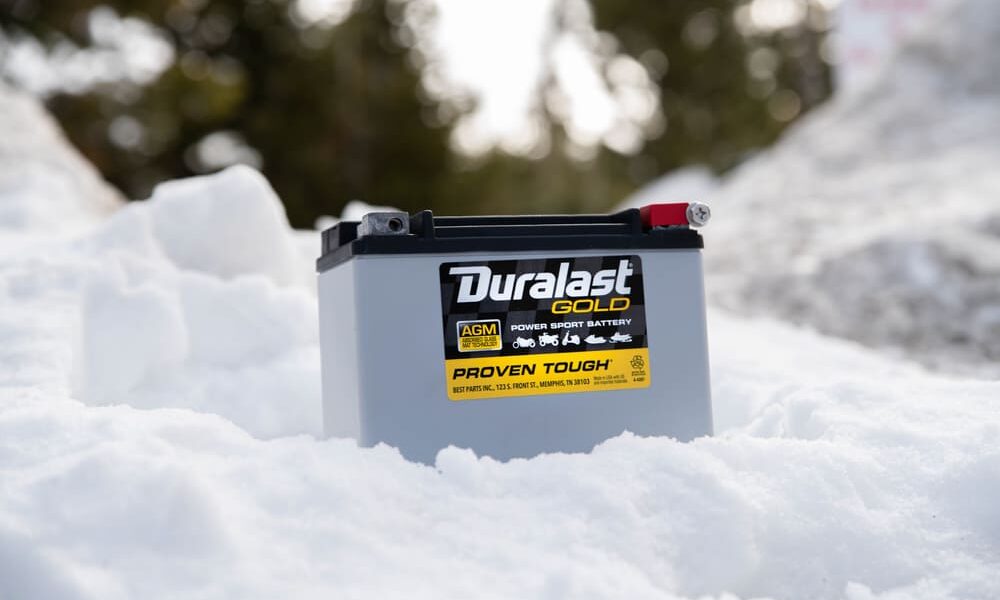
Frigid weather conditions can be tough on vehicles, especially on car batteries. When you go outside to start your car, you want that engine to fire up, so you don’t get caught in the cold. Having the best car battery for cold weather can give you the starting power that you need to make it through another Alberta winter.
Here are tips for what to look for in a cold-weather car battery:
Check for Cold Cranking Amps.
Cold Cranking Amps (CCA) is a rating the battery industry uses to determine a vehicle battery’s ability to start an engine in very cold temperatures. Cold crank rating is determined by the number of amps a 12-volt battery can deliver at -18 degrees Celsius (or zero degrees Fahrenheit) for 30 seconds while carrying and maintaining a voltage of at least 7.2 volts.
In cold weather conditions, the best car battery for cold weather will have a good CCA rating. If your car battery struggles every time you start your car in the cold, it will shorten the battery life. A battery with a decent cold crank and higher starting power will last longer and give a high performance. If you’re not sure what CCA rating you need, we can help determine that based on your specific vehicle and any aftermarket accessories you may need to run.
Consider the reserve capacity.
The reserve capacity (RC) of a battery is another rating worth considering. It is determined by the number of minutes a charged battery at about 26 degrees Celsius (80 degrees Fahrenheit) will discharge 25 amps until the battery drops below 10.5 volts. Essentially, the higher the RC rating the better.
Decide on a battery-type.
There is a range of battery types available on the market, and like anything, some are better than others. We will go over the basic features of three popular battery designs.
Standard flooded battery: This type of lead-acid battery can power a basic electrical system and provide reliable start-ups. If you want a high vibration resistance or if you have a vehicle that requires extra electrical demands, this might not be the best choice.
Absorbent Glass Mat (AGM) battery: AGM batteries are a decent upgrade from the standard lead-acid battery. They provide reliable starting power, good vibration resistance, are non-spillable, offer deep cycling and recharge, and can meet higher electrical demands. AGM is a smart choice.
SPIRALLCELL battery: The Optima SPIRALLCELL design is probably the best car battery for cold weather conditions and high performance. However, it is more expensive and might give more than a standard vehicle requires. Still, if you want to feel confident starting your car in even the coldest weather, it might be worth the investment. It offers everything an AGM battery does but can stand up to extreme use. If you have a plethora of aftermarket accessories and are demanding on your vehicle’s performance, a SPIRALLCELL battery can be the best choice for you.
Size matters.
When choosing a car battery, the size, terminal locations, and physical dimension must be the right fit for your vehicle. Batteries are categorized in group sizes based on your car’s make and model, and its engine type too. All this information can be found in your owner’s manual. Your car might be able to accommodate a battery from more than one group size and this is something.
More tips for buying the best car battery for cold weather.
If you’ve chosen the right battery-type and design, and have triple checked that it has enough of a cold crank to meet the demands of our weather conditions, you’re on the right track. Here are some other things you can do to ensure your car battery will last this winter:
- Have your car battery inspected regularly by a trustworthy mechanic like.
- Clean your battery regularly if there is corrosion near the terminals. You can also buy a corrosion-free battery.
- Check the details on your battery’s warranty. Even the best car batteries for cold weather can fail, but they can be covered under warranty.
Courtesy of revolutionmotors










